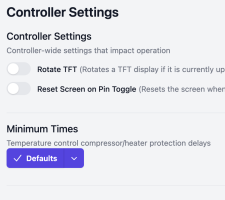Maybe there's a non-Belkin device programming app out there already?
"There are ways to interface with WeMo devices programmatically, though they primarily rely on the devices' underlying communication protocols rather than a formally published "developer API" from Belkin. Specifically, WeMo devices utilize the Universal Plug and Play (UPnP) protocol over HTTP. This allows for discovery of WeMo devices on the local network and communication using SOAP actions.
While Belkin doesn't provide a fully documented public API for general development, the community has filled the gap by developing libraries and tools that interact with WeMo devices using UPnP and SOAP:
"There are ways to interface with WeMo devices programmatically, though they primarily rely on the devices' underlying communication protocols rather than a formally published "developer API" from Belkin. Specifically, WeMo devices utilize the Universal Plug and Play (UPnP) protocol over HTTP. This allows for discovery of WeMo devices on the local network and communication using SOAP actions.
While Belkin doesn't provide a fully documented public API for general development, the community has filled the gap by developing libraries and tools that interact with WeMo devices using UPnP and SOAP:
- Libraries in various languages: You can find libraries in different programming languages that simplify communication with WeMo devices. For instance, there's a C# library called WeMosDef and a Python module called PyWeMo.
- UPnP Interaction: The devices themselves expose a SOAP API for retrieving data and controlling them. You can discover WeMo devices on the network using a UPnP broadcast and then access their services and actions.
- REST API Wrappers: Some projects have wrapped the UPnP/SOAP interactions into simpler REST APIs, making it easier to control WeMo devices with HTTP GET calls.
- Third-party Integrations: Platforms like Home Assistant have built-in integrations for WeMo devices, often leveraging the same underlying communication methods.














































![Craft A Brew - Safale BE-256 Yeast - Fermentis - Belgian Ale Dry Yeast - For Belgian & Strong Ales - Ingredients for Home Brewing - Beer Making Supplies - [3 Pack]](https://m.media-amazon.com/images/I/51bcKEwQmWL._SL500_.jpg)












